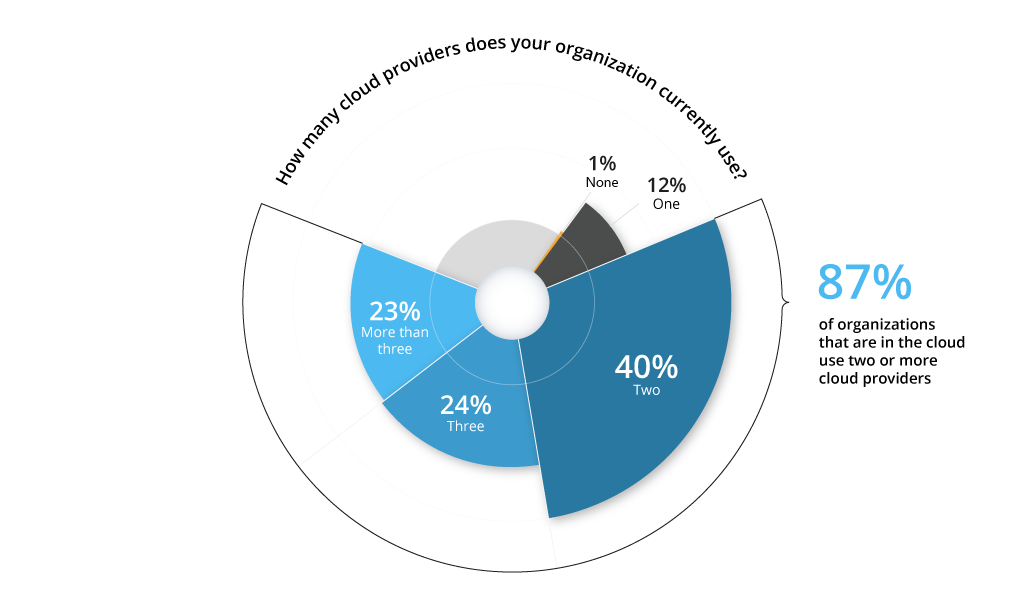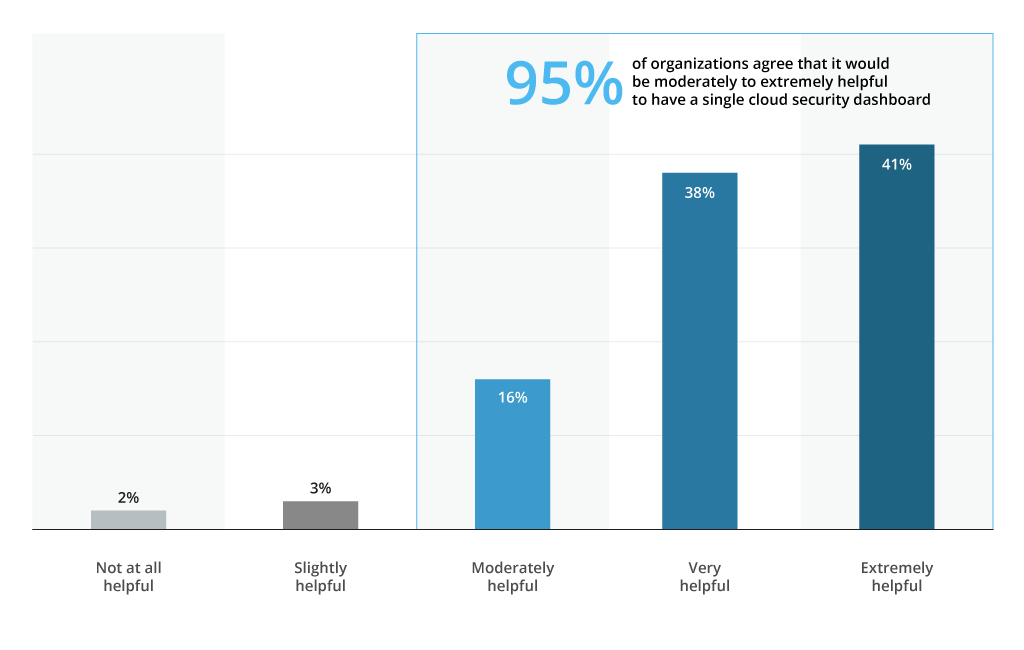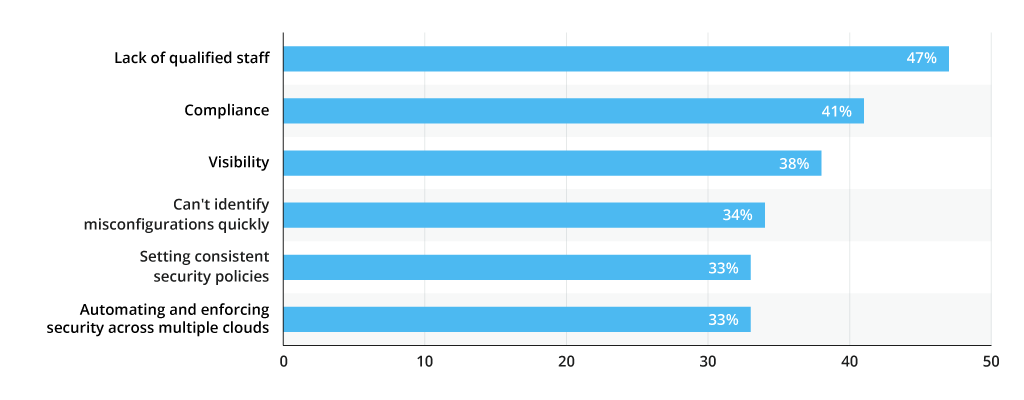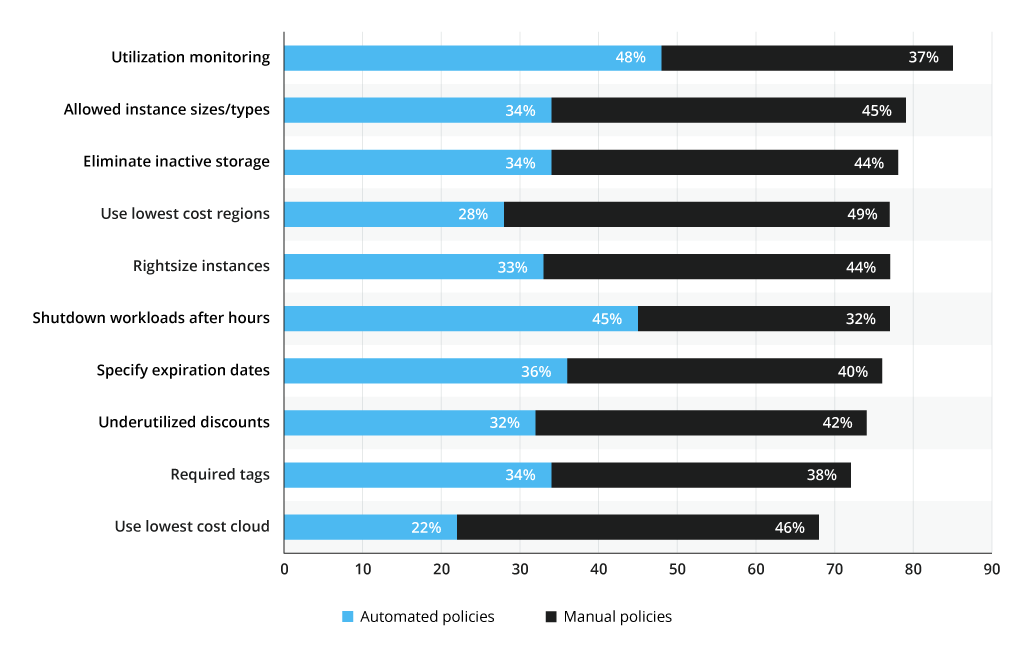Multi-Cloud Governance: Policies and Procedures to Maintain Control and Compliance
The adoption of a multi-cloud approach has become a hallmark of forward-thinking businesses in today's dynamic cloud computing landscape. With leading providers such as AWS, Google Cloud, and Azure offering unprecedented flexibility, organizations are equipped with a multitude of choices. A striking 87% of organizations now rely on two or more cloud providers, showcasing the scale of multi-cloud adoption.
However, with great power comes great responsibility. As data breaches become more common, it underscores the critical importance of robust control and governance in a complex multi-cloud setup.
How Important Is Multi-Cloud Governance?
Multi-cloud governance is the practice of orchestrating policies and procedures to ensure control and compliance in a multi-cloud environment.
Recent data reveals a worrisome trend: 39% of businesses experienced data breaches in the cloud in 2023, marking a 4% increase from the previous year. These numbers are not mere statistics; they serve as a stark reminder to businesses that they must improve their governance practices. The consequences of lax governance are severe. Data breaches are not only costly but can also severely damage a company's reputation. When a breach occurs, it erodes the trust of customers, partners, and stakeholders and exposes organizations to legal and regulatory consequences. Effective governance is the shield against these risks. However, the path to achieving this is far from straightforward, given the complex nature of multi-cloud environments.
Multi-Cloud Management: Key Considerations
In the enterprise segment, medium and large organizations grapple with several formidable challenges in their multi-cloud environments. To effectively face them, businesses need to adjust their approach in three main areas.
Centralized Monitoring
The diverse and dispersed nature of multi-cloud resources calls for centralized monitoring and effective software asset management (SAM). Apart from the mere convenience of having a single control panel for all cloud instances, it helps counter inefficient resource allocation. Reports reveal that cloud waste comprises 30% of cloud spending on unused resources, which can be spotted and optimized with proper monitoring policies.
The menace of shadow IT also looms large, with employees frequently resorting to unauthorized applications. According to BetterCloud, a staggering 69% of respondents express concerns about unsanctioned SaaS apps, while 46% face challenges in securing user activities within these applications. As a result, businesses strive to have all-encompassing security and monitoring tools. A unified cloud security dashboard is valued by 95% of organizations as it provides essential visibility into resources scattered across on-premises and multi-cloud environments. Without it, organizations risk losing critical resource visibility, hindering effective tracking and management.
Automatic Management
Automation is on the rise, especially for tasks like software updates and settings. For instance, Azure Arc provides a solution for managing on-premises Kubernetes configurations, allowing for seamless updates and unified management across different environments.
A new survey by the Cloud Security Alliance indicates that misconfigurations could be behind as much as 63% of security incidents. Therefore, automated management significantly reduces the margin for human error and ensures that systems remain up-to-date and secure.
Enhanced Security
According to IBM's Cost of a Data Breach Report, the average cost of a data breach is around $4.24 million. The ability to deploy robust security measures uniformly across a complex cloud landscape is essential to maintaining data integrity. Enhanced security measures, combined with automated threat detection and response, help organizations to safeguard their multi-cloud environments against evolving cybersecurity threats. Solutions like Microsoft Defender for Cloud play a vital role in providing comprehensive protection for cloud-based servers, Kubernetes, and databases.
Overall, these challenges underscore the complexity of multi-cloud governance and the critical need for proactive solutions. Let’s delve into the importance of policies and procedures to maintain control and compliance, demonstrating their critical role in the multi-cloud context.
The Cornerstones of Governance: Policies & Procedures
Policies and procedures are the bedrock of strong multi-cloud governance. They create a framework for organizations to securely navigate the cloud while adhering to industry standards.
Policies come in two primary flavors: company-wide policies and cloud-specific policies. Company-wide policies establish broad regulations that apply universally across the entire organization, setting the baseline for governance. In contrast, cloud-specific policies are tailor-made to steer and restrict specific cloud-related procedures, facilitating automation and standardization within the multi-cloud ecosystem.
The absence of robust cloud-specific policies can turn the management of cloud infrastructure into a turbulent journey marked by misconfigurations, operational inefficiencies, and an elevated risk of security vulnerabilities. This fact is notably emphasized in the 2022 AWS Cloud Security Report, with 41% identifying compliance and 33% citing the establishment of consistent security policies as their major challenge in safeguarding cloud workloads.
In the context of multi-cloud governance, policies act as a preventative measure, saving organizations from the potential aftermath of data breaches, compliance violations, and operational chaos.
For example, Microsoft offers Azure Arc as a valuable tool for connecting servers across multiple clouds and enforcing governance policies. This tool automates the auditing process, continuously scanning cloud resources and issuing alerts whenever it detects deviations from predefined settings or policies. It provides organizations with an essential layer of control, acting as the sentry that guards against potential risks and ensures unwavering compliance.
Common Multi-Cloud Governance Policy Areas
With the increasing adoption of multi-cloud strategies, organizations are leveraging a variety of policies to address the unique challenges and opportunities presented by this approach. To provide a clearer picture, let's dig into some common policy areas and their significance.
Data Security
Data security policies function as protective measures against cyber threats and breaches – for instance, 26% of organizations reported using more than twenty security policies.
These policies involve various measures, including data encryption, access controls, and regular security audits. For instance, organizations may implement policies that enforce data encryption at rest and in transit to ensure that data remains confidential and intact. Access controls restrict unauthorized users from accessing sensitive data, adding an extra layer of defense. Regular security audits, conducted following these policies, help identify vulnerabilities and ensure data integrity.
Cost Control
Cost control policies are instrumental in the context of multi-cloud environments. They focus on efficient resource utilization, budget limits, and expenditure monitoring. For instance, some policies automate resource scaling during peak hours to reduce costs during periods of lower demand. Additionally, optimizing cloud licensing costs is another example of a strategic policy aimed at ensuring cost-effectiveness and aligning expenses with actual usage patterns.
Now, let's examine the specific policy categories that organizations commonly use to enhance their cloud cost optimization strategies:
Notably, the emphasis on utilization monitoring at 48% indicates a strong focus on tracking and optimizing resource usage, while policies like shutting down workloads after hours at 45% and eliminating inactive storage at 34% underscore a commitment to operational efficiency.
Performance Optimization
It's widely known that if a mobile site takes longer to load, users are more likely to leave. Enter performance optimization policies – they're all about boosting the speed and efficiency of cloud resources. These policies involve fine-tuning configurations, employing load balancing, and leveraging automation to ensure applications and services run smoothly, delivering top-notch user experience. For example, some policies automatically distribute server traffic to prevent lags, ensuring seamless user interaction.
Best Practices for Multi-Cloud Management
At the core of multi-cloud governance lies the effective execution of policies. Achieving this necessitates a structured approach to turn policies into practical, sturdy guidelines that protect organizations within the complex multi-cloud landscape.
1. Implement/Prioritize Automation
The first pillar, automation prioritization, lays the groundwork for the strategic management of multi-cloud environments. This step involves turning abstract policies and strategies into actionable, hands-on practices. With clear processes and playbooks, you can effectively implement automation.
To underscore its importance, consider the forecast from Gartner — by 2025, a staggering 70% of enterprises are expected to actively replace manual infrastructure management with automated systems. By implementing these measures, organizations ensure that their multi-cloud environments align with their strategic goals, promoting efficiency and reducing the likelihood of costly misconfigurations.
2. Enforcement
The next big part is making sure all the plans put into action during the setup are followed consistently. With an increasing focus on automation, keeping things in line becomes easier. This isn't just an idea; it's about keeping data safe, controlling costs, and using resources wisely. For example, strict access controls keep unauthorized people away from sensitive data, reducing security risks. Automated rules can make sure resources are used most effectively and cost-efficiently, freeing up time and ensuring things run smoothly.
3. Audit
Regular audits serve as essential check-ups to determine if the established policies and rules are functioning as intended. They are not one-time events but an ongoing process to adapt policies to evolving cloud environments. Notably, misconfigurations account for 65% to 70% of all security challenges, making regular checks vital for identifying potential issues before they escalate. This cycle of checks maintains system security and fine-tunes policies to suit changing needs.
Overall, by diligently implementing, enforcing, and auditing policies, organizations can leverage the potential of their multi-cloud landscapes.
Final Thoughts
In summary, the successful management of multi-cloud environments relies on more than just an extensive array of cloud providers. It requires a thoughtful blend of well-made rules, efficient strategies, and smart automated tools to get the most out of multi-cloud systems.
It's also essential to understand that multi-cloud governance isn't a one-size-fits-all solution – it's a strategy that should be carefully customized to align with each organization's unique requirements and objectives. With the multi-cloud era in full swing, those who embrace effective governance practices position themselves to capitalize on the myriad benefits of multi-cloud environments while safeguarding their data and adhering to industry standards.
![Multi-Cloud Governance: Policies [banner]](https://www.infopulse.com/uploads/media/banner-1920x528-multi-cloud- governance-policies-and-procedures.webp)






![Cloud-Native for Banking [thumbnail]](/uploads/media/cloud-native-solutions-for-banking_280x222.webp)
![Generative AI and Power BI [thumbnail]](/uploads/media/thumbnail-280x222-generative-AI-and-Power-BI-a-powerful.webp)
![Cloud Native vs. Cloud Agnostic [thumbnail]](/uploads/media/thumbnail-280x222-cloud-agnostic-vs-cloud-native-architecture-which-approach-to-choose.webp)
![DevOps Adoption Challenges [thumbnail]](/uploads/media/thumbnail-280x222-7-devops-challenges-for-efficient-adoption.webp)
![Azure Monitor for SAP [thumbnail]](/uploads/media/thumbnail-280x222-azure-monitor-for-sap-solutions-an-overview.webp)

![Mortgages Module Flexcube [Thumbnail]](/uploads/media/thumbnail-280x222-Secrets-of-setting-up-a-mortgage-module-in-Oracle-FlexCube.webp)
![Digital Alignment Drivers [thumbnail]](/uploads/media/thumbnail-280x222-the-top-forces-driving-digital-alignment.webp)
![AWS vs. Azure Cloud Platform [Thumbnail]](/uploads/media/thumbnail-280x222-comparison-of-aws-vs-azure-when-each-cloud-platform-works-best.webp)
![Cloud-Native Maturity Model Assessment [thumbnail]](/uploads/media/thumbnail-280x222-what-Is-the-cloud-native-maturity-model-definition-and-assessment-criteria.webp)